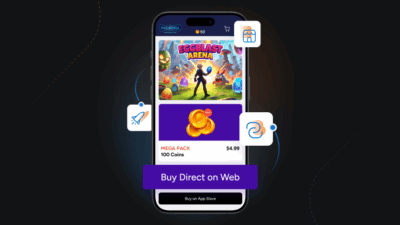Great product descriptions are the unsung heroes of ecommerce content. At their best, product descriptions persuade without sounding persuasive; they sell without sounding like they’re selling. The most successful copy conveys information in a way that’s enticing and also easily absorbed, with minimal effort from the reader.
It’s both harder and easier than it sounds. Companies who overlook product descriptions do so at their peril – after all, your customer is potentially reading your product description at a critical purchase decision junction! But don’t be intimidated. To write great product descriptions that convert, just make sure you’re paying attention to these guiding principles.
- Inspire confidence through relevant information.
What does a product description do? Well, broadly speaking, product descriptions serve to inform a purchase. To that end, your description should convey trustworthiness and professionalism. But that doesn’t mean you can’t try out a pun or pop culture reference. If being fun or silly is essential to your brand DNA, then, by all means, make sure your product descriptions reflect that. Just don’t lose sight of your objective. Product descriptions are meant to be descriptive, straightforward, and useful. They should sum up your value proposition in a concise way, providing the info your customer needs in order to quickly understand the product – without needless distractions.
- Understand and address your target’s needs.
What are the problems faced by your target audience? How does your product solve those problems – and how can you help them overcome their barriers to purchase? These are good questions to ask yourself with regard to every touchpoint, but when thinking about the product description it’s especially important to frame your copy with these questions in mind since this is the core messaging. And think about the larger context for your target audience: Does your enterprise customer need to convince a superior to approve the purchase? If so, consider including proof points that will be helpful for them to make the case. Is your target comparing your product against a certain competitor? Make sure you’re addressing differentiators accordingly.
- Make it scannable.
This is an essential principle for all web copy, especially as mobile devices take on a larger proportion of traffic. Use headings, short sentences, keywords, and bullet points.
Which brings us to….
- Brief is better.
I can’t emphasize this enough. You all know the old saying, right? “Brevity is the soul of wit…and product descriptions.” You want your copy to be both scannable and compelling, and we all know there’s nothing less compelling than a wall of text on a product page. Of course, length will depend on how many products you offer and the way your product listings are structured. If your product is highly complex, it might warrant a longer description. But in general, remember: Less is always more. Even if you have a lot of details to cover, make sure your individual sentences are punchy and to the point.
- Think of benefits, not features.
Sometimes we can get so enamored of our own creative names for features – our Thing with Special Proprietary Thing-Tech™ Technology – that we can lose sight of the benefit it affords the customer, that is, the reason they care about Thing-Tech tech: How does Thing-Tech benefit them? Position your features in terms of benefits. If the Special Thing-Tech thing will save them time, lead with that information instead. Too much feature-speak and your customers’ eyes will glaze over. After all, they might not love your product as much as you do (yet). Make sure the features have meaning on their own, and if they don’t, tie them to the benefit instead.
With these tips in mind, you’ll be able to craft solid product descriptions that will set you apart from competitors and communicate your product’s value effectively.









